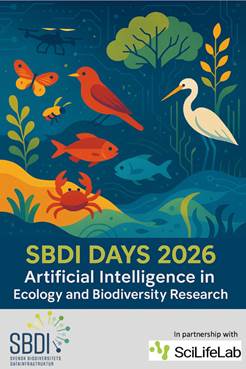SBDI brings biodiversity data together
SDBI aggregates biodiversity data from multiple sources and makes it available and usable online. It is the largest collection of freely available biodiversity data in Sweden.
Making the most of biodiversity data
Biodiversity data about plants, animals and fungi and their habitats may be used to educate and inform and in environmental decision-making, state of the environment assessments and restoration and rewilding.
News
New R package: SHARK4R simplifies work with marine data
A new R package is now available on The Comprehensive R Archive Network (CRAN). SHARK4R provides researchers and environmental analysts with a tool for retrieving, quality assuring, and processing marine environmental data directly in R. The package includes client functions that connect users to several key databases, including SHARK, Dyntaxa,...
New vegetation dataset from NILS opens a window onto Sweden’s changing landscapes
A new dataset from the National Inventories of Landscapes in Sweden (NILS) is now available through GBIF Sweden, offering a uniquely detailed look at how vegetation and habitats are distributed across the country. The dataset, “National Inventories of Landscapes in Sweden: Presence-absence Vegetation data”, brings nearly two decades of systematic...
[Training course FRB-Cesab] AI for ecologists: a toolkit – 2026
The Cesab – Centre for the Synthesis and Analysis of Biodiversity – of the FRB is opening the second edition of the training course «Artifical Intelligence for ecologists: a toolkit». This five-day training course aims to initiate ecologists to AI concepts and tools. The course will be a mix of...


















